Many family heirlooms—or future heirlooms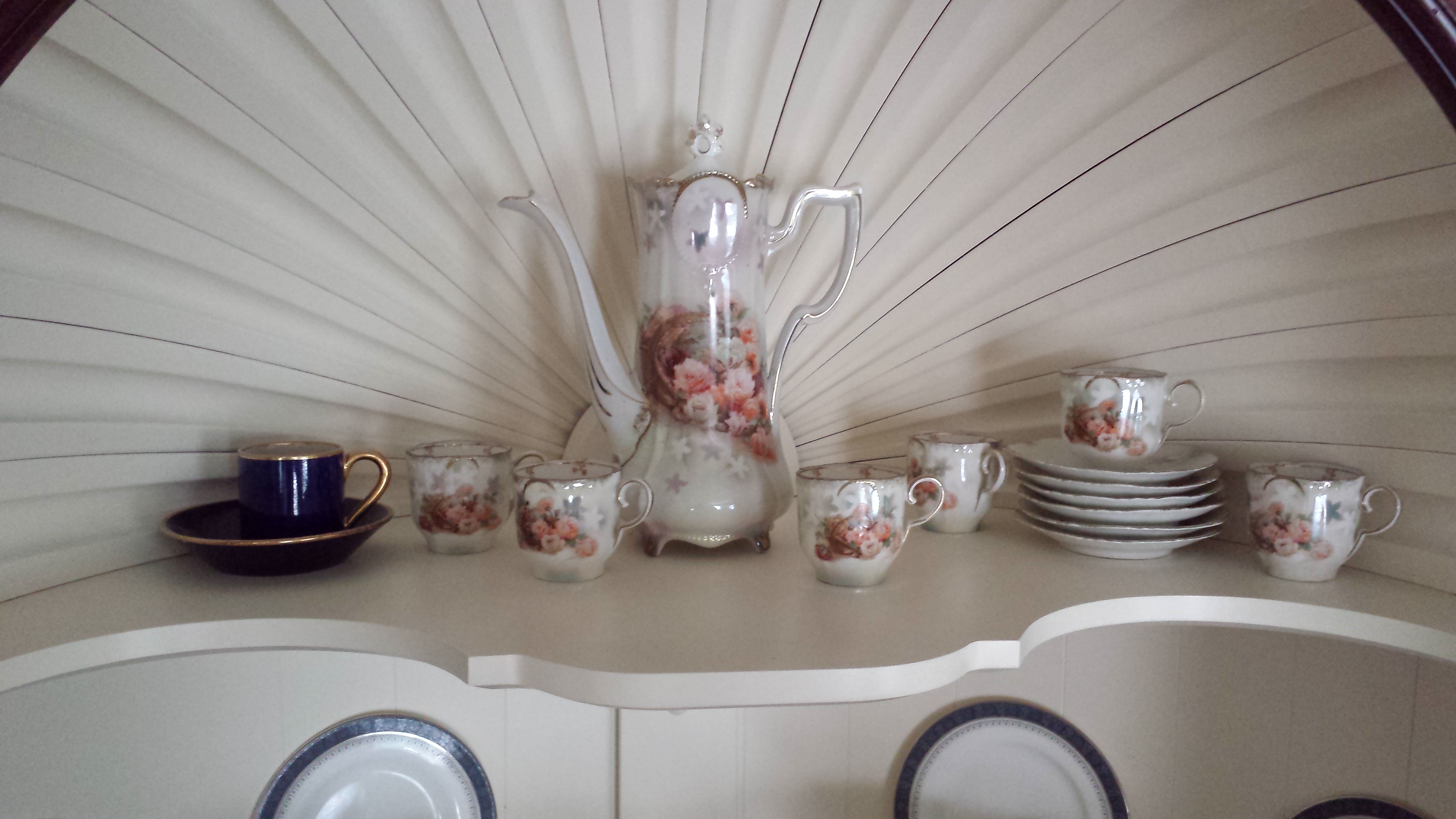 —have sentimental value because of the stories behind them. But the stories of others are lost to time.
—have sentimental value because of the stories behind them. But the stories of others are lost to time.
I have a porcelain coffee pot and six matching demitasse cups and saucers that are in the latter category. My mother sent the set to me not too many years after I got married, along with a single cobalt blue cup and saucer. These pieces had been my grandmother’s, but I don’t remember them in my parents’ house. I don’t know if my grandmother gave the set to my mother many years earlier or if my mother got it not long before she passed it on to me. Or maybe my grandmother, in one of her downsizings, decreed it should come directly to me.
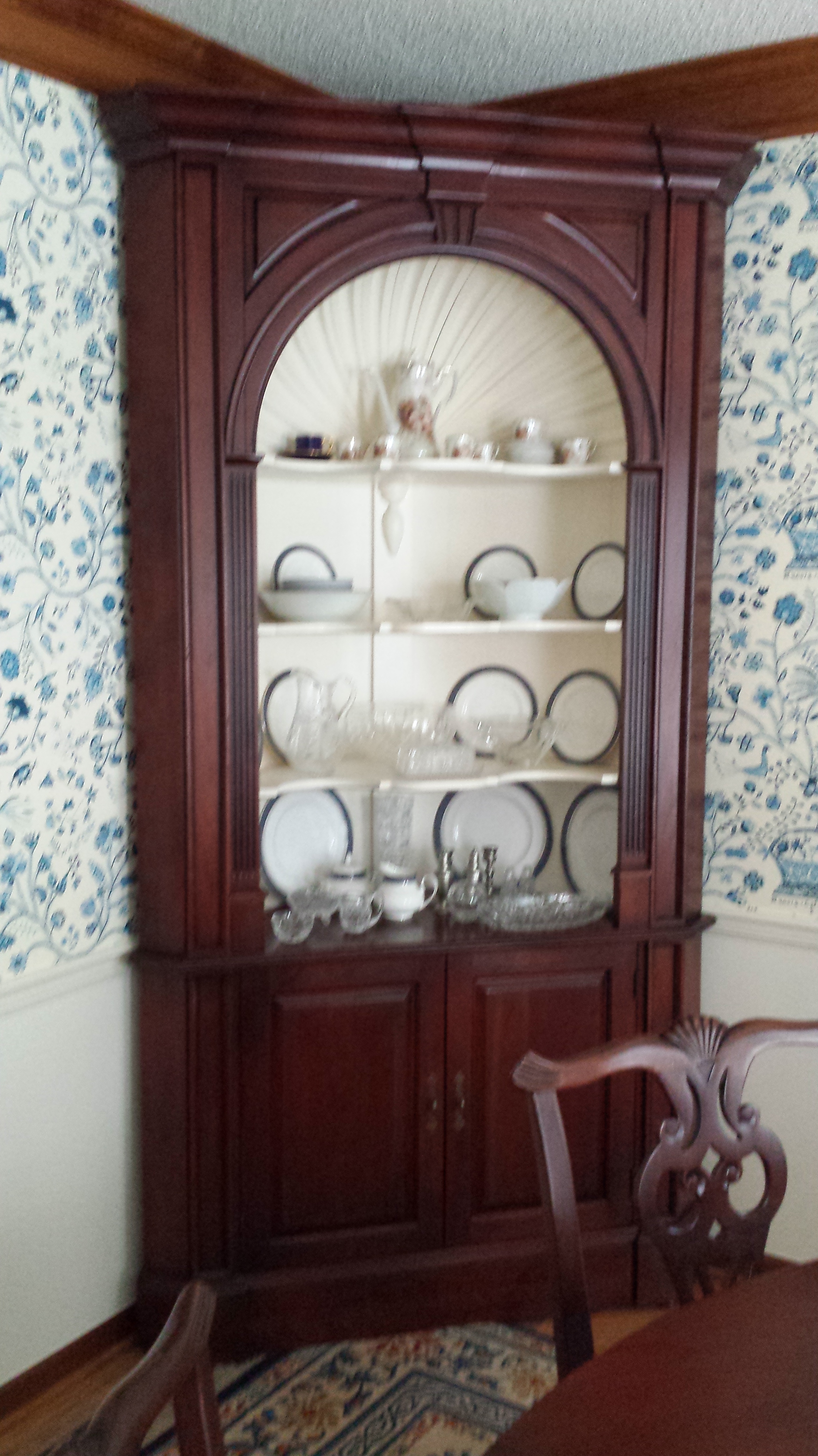 I don’t remember my grandmother ever using it in her home, though I recognize it as something she owned. All I remember is that it somehow came into my possession.
I don’t remember my grandmother ever using it in her home, though I recognize it as something she owned. All I remember is that it somehow came into my possession.
I’ve never used the coffee pot. I think I served coffee in the tiny cups once or twice, shortly after I received them. I know the service has sat untouched on the top shelf of my dining room hutch for many years.
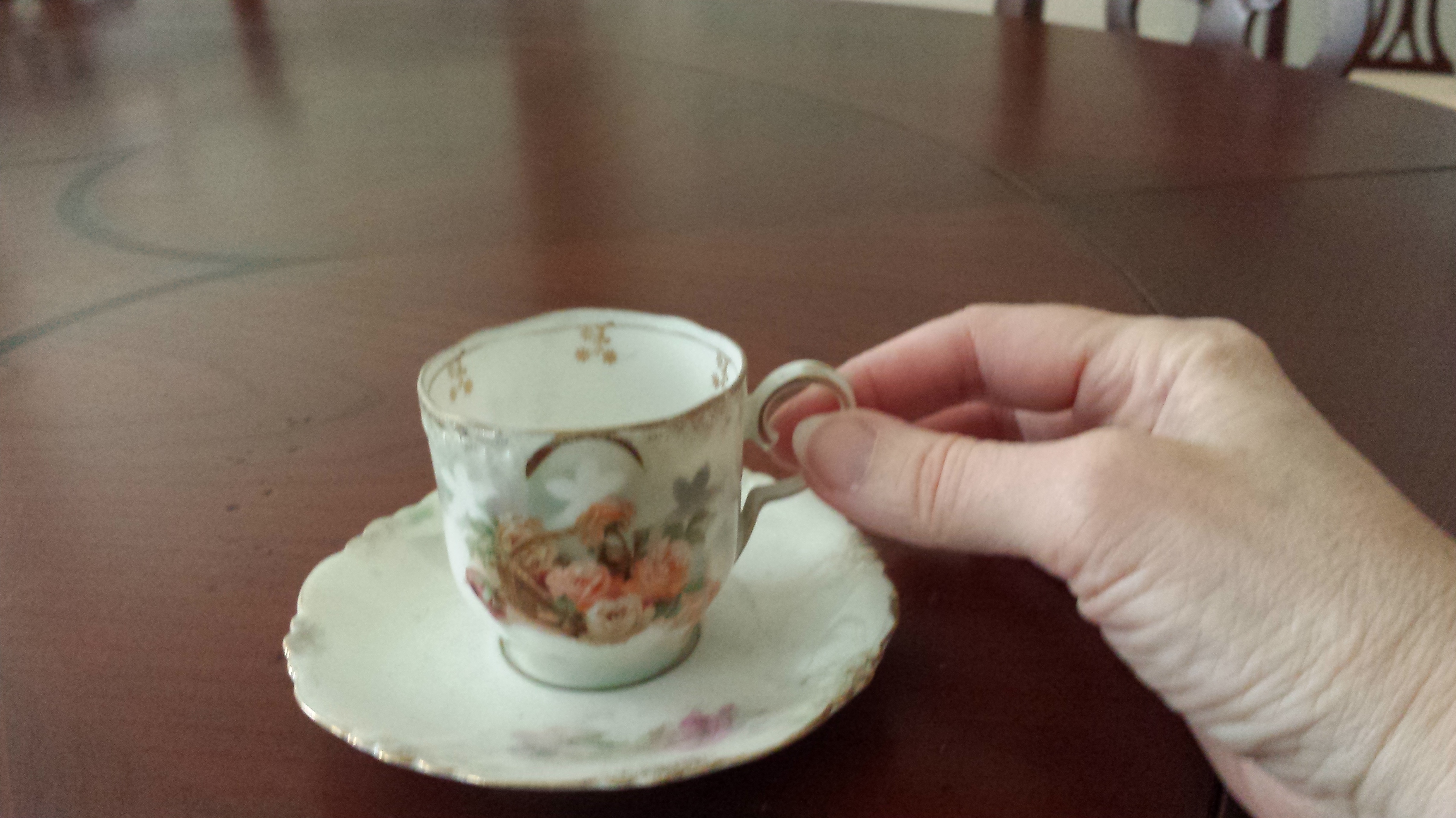 I’ve always liked the set—its daintiness, the lovely floral design, the gold trim. But my lifestyle doesn’t lend itself to use of delicate china demitasses. First, I don’t drink coffee. Second, when I drink tea, I want a lot more liquid than these tiny cups can hold. Third, I like dishwashers, and don’t want to hand wash such fragile treasures.
I’ve always liked the set—its daintiness, the lovely floral design, the gold trim. But my lifestyle doesn’t lend itself to use of delicate china demitasses. First, I don’t drink coffee. Second, when I drink tea, I want a lot more liquid than these tiny cups can hold. Third, I like dishwashers, and don’t want to hand wash such fragile treasures.
But is the set a treasure or not? If I don’t know the story behind it, it has no sentimental value, and its only other attraction is its intrinsic loveliness. Does it have any financial value?
My husband and I have many things we have inherited from one family branch or another. For example, some paintings from older relatives hang proudly on our walls, because we like them. Others sit in closets, because we don’t know the appropriate way to dispose of them. Should we find an appraiser? Hold a garage sale (horrors!)? Simply throw them out or give to charity? Without knowing if they have value other than as bearers of family memories, it’s hard to decide what to do.
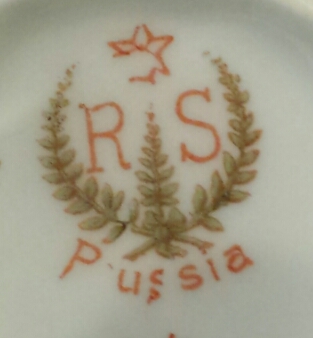 I recently set out to explore whether my grandmother’s coffee service had any value. The starting point was a trademark on the bottom of several of the pieces (the mark had worn off other pieces in the set). The mark says R.S. Prussia, and a little internet research turned up references to the Reinhold Schegelmilch Porcelain Factory in Prussia.
I recently set out to explore whether my grandmother’s coffee service had any value. The starting point was a trademark on the bottom of several of the pieces (the mark had worn off other pieces in the set). The mark says R.S. Prussia, and a little internet research turned up references to the Reinhold Schegelmilch Porcelain Factory in Prussia.
Reinhold exported porcelain to the United States as early as 1880, but most of their tableware did not come into this country until 1894 or later. The mark on my grandmother’s coffee set was not used regularly until 1905, and Reinhold discontinued this style of elaborate florals and other scenes enhanced with gold around 1910.
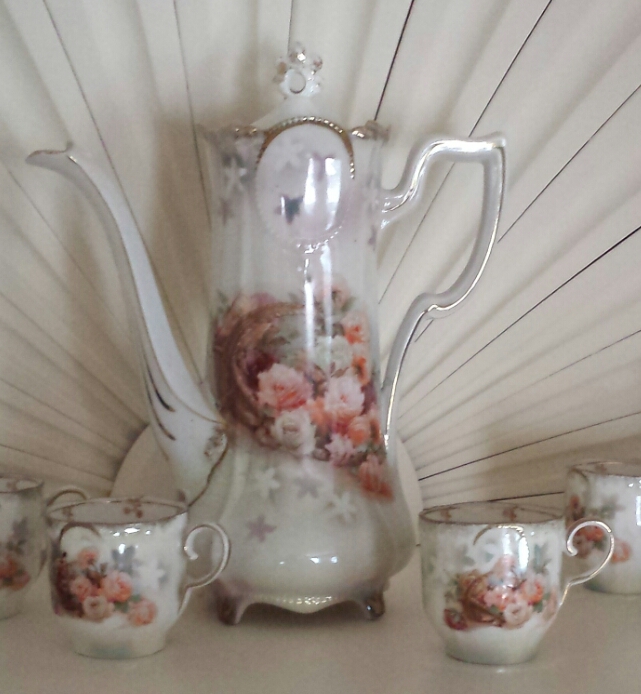 My best guess is that my set originated between 1905 and 1910, but it could have been made several years earlier or later. My grandmother was born in 1908, so the set was probably acquired by someone in her parents’ generation. But I have no way of knowing for sure. Nor do I have any way of knowing whether my grandmother’s family used it daily or kept it for special occasions. The pieces show wear, but they are in relatively good condition.
My best guess is that my set originated between 1905 and 1910, but it could have been made several years earlier or later. My grandmother was born in 1908, so the set was probably acquired by someone in her parents’ generation. But I have no way of knowing for sure. Nor do I have any way of knowing whether my grandmother’s family used it daily or kept it for special occasions. The pieces show wear, but they are in relatively good condition.
Is the set valuable? Well, it depends on which eBay seller you believe.
There are collectors of R.S. Prussia pieces. So someone might want it someday. I’ve looked through several sites that have pictures of R.S. Prussia sets, but I haven’t seen mates to my set. Does that mean I have something unique? Or does it simply mean no one wants to collect this pattern, because it was so common? And, of course, there were forgeries, purporting to be R.S. Prussia works. So who knows what it might be worth?
For now, I think I’ll keep the set on the top shelf of my dining room hutch. It is pretty, after all. And it saves me deciding what to do with it.
What possessions do you have that you’d like to know more about?




I’ve inherited several large pieces of furniture from my mother. They have writing on the back directing the rail line to deliver to Lawrence, KS. I’d tell you the name, but then I’d have to move them out from the wall and that’s too much trouble. Three of the pieces are in my dining room. She found the hutch in Ottawa, KS in WWII in a basement filled with home canned goods in a basement. Forty years later, she found the matching pieces at her favorite antique shop in Fort Scott, KS. I wish they could talk. I’d love to interview them.
It’s amazing to be able to match the pattern 40 years later. But my parents had the same experience with their china pattern, and even matching a piece to the china set that came from Ireland around Cape Horn.
Thanks for reading,
Theresa
That’s a beautiful set, Theresa. I can understand why you choose to display it rather than put it to use.
My grandmother used to collect dainty tea cups. When she passed away, she left the collection to me. I’m not an appraiser, but in my opinion they’re worth a million dollars. 🙂
Well, if you say it’s a million dollars, then it is. Value is in the eyes of the beholder.
Theresa
Ah, yes. The collected family treasures – my mother’s Depression Glass plates; Cliff’s mother’s Duncan Pfiffe hutch and china closet; his grandmother’s ruby glass bowl; another grandmother’s china; an old friend’s leaded crystal bowl; my grandmother’s crystal salt & pepper shakers; I could, unfortunately, go on and on. To say nothing of the small coffee cups and espresso sets I have for whatever reason collected.
So. Theresa. Here’s what we need to do. An afternoon soiree. We’ll join our cup forces and little plates, fix coffee and tea (I also have a set of Chinese ceremonial tea cups….) and we’ll celebrate history and soir. Between us, I’m sure we could fill a room… and all the cups. And have wonderful conversation at the same time.
We’ll include Jill. She has a set too!
Sounds like a plan!